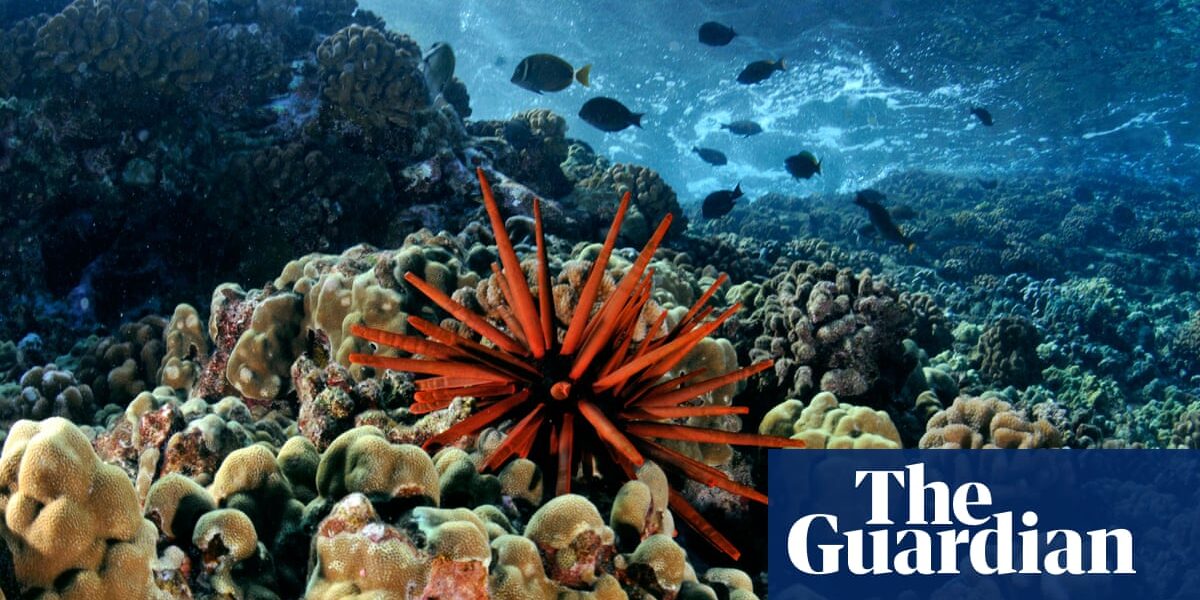Broadcasting healthy reef noises through subaquatic speakers may potentially aid in the restoration of damaged coral ecosystems.

Researchers suggest that installing underwater speakers to broadcast the lively sounds of thriving coral could revitalize damaged and deteriorating reefs, preventing them from becoming underwater graveyards.
Researchers in the Caribbean, specifically near the US Virgin Islands, discovered that coral larvae had a higher chance of settling at a distressed reef when they were exposed to recordings of the sounds produced by a thriving ecosystem, such as snaps, groans, grunts, and scratches.
“We are looking at the possibility of integrating this with other initiatives to restore the positive elements to the reef,” stated Nadège Aoki, a researcher at Woods Hole Oceanographic Institution in Massachusetts. “By placing a speaker in the water for a specific period of time, we could potentially attract both coral larvae and fish back to the reef.”
Due to the destructive effects of global warming, overfishing, pollution, loss of habitat, and disease outbreaks, almost half of the world’s coral reefs have disappeared since the 1950s. As a result, there have been strong efforts to preserve the remaining reefs, including replanting with corals grown in nurseries and creating more resilient strains that can survive in warmer waters.
Aoki and her coworkers approached the research from a different angle, expanding upon previous studies that demonstrated the tendency of coral larvae to swim towards the sounds of reefs. They installed speakers underwater at three separate reefs near St John, the smallest island among the US Virgin Islands, and recorded the number of coral larvae that settled onto rock-like ceramic pieces in containers of filtered sea water up to 30 meters from the speakers.
Although speakers were placed at all three locations, only the Salt Pond reef, which had been affected by degradation, was exposed to the sounds of a vibrant reef for three nights. The Cocoloba and Tektite reefs, both of which varied in health, were used for comparison at the other two sites.
After being released into the water, coral larvae are swept by currents and swim without restraint until they locate a suitable location to settle. Upon reaching the ocean floor, they adhere to their chosen spot and, if they can survive, develop into adult corals.
The researchers published a study in the Royal Society Open Science journal discussing how, on average, the Salt Pond reef had 1.7 times more coral larvae settling compared to the other locations where reef sounds were not played. The rate of settlement at Salt Pond decreased with increasing distance from the speaker, indicating that the broadcasting of reef sounds was the cause of the higher settlement.
Although the findings are encouraging, Aoki expressed that further investigation is necessary to determine if other types of coral also react to reef sounds and if they are able to thrive after settlement. “Careful consideration must be taken when applying this technology,” she emphasized. “We want to avoid attracting corals to locations where they will not survive. It requires a comprehensive approach with measures in place to ensure the long-term survival and growth of these corals.”
Marine biologist Professor Steve Simpson, who works at the University of Bristol, has been utilizing audio recordings to draw fish larvae to reefs for two decades. His involvement in the study on coral larvae’s response to reef sounds highlights the potential of acoustic playback to encourage coral growth in reef environments.
According to Simpson, our priority is to protect coral reefs as we strive to achieve net zero and address the climate crisis. Coral reefs are the first marine ecosystems at risk due to climate change, but also the first that we have the potential to preserve. Preserving reefs would demonstrate our ability to protect any ecosystem.
Source: theguardian.com




